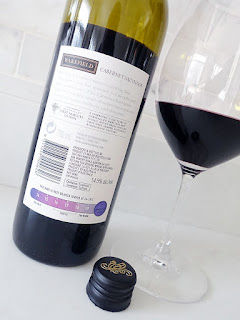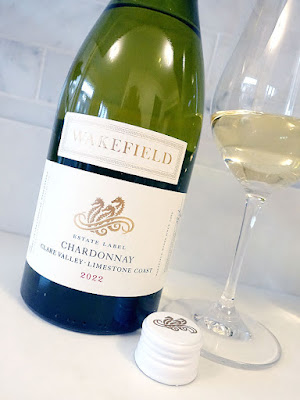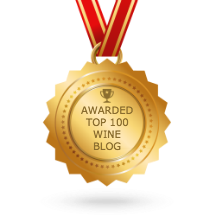red wine review is the latest vintage of a consistently delicious Cabernet Sauvignon from South Australia that returned to Ontario in last month's LCBO VINTAGES New Release Collection on .
It is produced by Wakefield Wines, also known as Taylors Wines in their home market of Australia. The estate winery was established in 1969 in Australia's Clare Valley by Bill Taylor Sr. and his two sons, Bill Taylor Jr. and John Taylor. They acquired some land near the Wakefield river in Clare Valley and discovered fossilized seahorses during an excavation - elements which exist as part of their current branding.
Today, Wakefield Wines is led by the third generation of the Taylor family — brothers Mitchell, Justin, and Clinton. After 25 years as Managing Director, Mitchell stepped into the role of Chairman of the Board a few months ago, thus allowing him to focus more on vision, succession, and guiding the next generation of leadership. Justin focuses more on the Export market and Global Key Accounts, while Clinton is the General Manager - Winery Operations.
As one of Australia's most renowned and respected wine producers, the philosophy at Wakefield has always rested on the principle that the finest wines are those made with the greatest dedication and care, while also respecting the fruit. The Taylor family is committed to both the land and sea, with sustainability a core pillar with a goal of applying the best practiced principles in environmental management to enhance sustainable business activities and products. As a family-owned company, they are committed to ensuring that they operate in a responsible and sustainable manner, thus setting up the future for generations to come.
Wakefield has several lines of wines, and this particular red wine is from their Jaraman range. The name "Jaraman" is derived from an indigenous term meaning "seahorse" and is a nod to the discovery of fossilized seahorses in the Clare Valley. The premium range of Jaraman wines celebrates Australia's iconic wine regions, which provide great diversity in soil and terroir. With the Jaraman range, the Taylor family searches for parcels of extraordinary fruit to craft wines that showcase their distinctive regional characteristics and style. The fruit for Jaraman wines is sourced from celebrated Australian wine regions that are renowned for the particular variety - Clare Valley and Coonawarra in the case of this Cabernet Sauvignon. When crafting these wines, the winemakers ensure that rhe distinct regional characteristics of each variety are preserved and enhanced, with the fruit as the star and any winemaking influencing the supporting act. Jaraman wines showcase the skill and dedication of our winemakers, while maintaining their philosophy of respecting the fruit.
While this red is 100% Cabernet Sauvignon, it is composed of 51% Clare Valley and 49% Coonawarra fruit, and is almost identical in composition to the 2021 Wakefield Jaraman Cabernet Sauvignon that I enjoyed a couple of years ago. After undergoing traditional vinification, the parcels of fruit were blended and matured for up to 14 months in French oak barrels (10% new and remaining in 1 to 2 year old), followed by fining, minimal filtration, and then bottling.
The growing season in Clare Valley in 2022 featured mild and sunny days without rain or humidity. It was an idyllic season of uninterrupted and stunningly beautiful weather, which resulted in a vintage of both quality and quality. In Coonawarra, it was a cool season with good yields and an extended ripening period due to the mild autumn days and cool nights, resulting in wines with great varietal definition, including depth of colour. Cabernet Sauvignon was a predictable standout in Coonawarra in this vintage. Let's see how this 2022 Cabernet Sauvignon from South Australia is tasting tonight...
Enclosed by screw cap, this 100% Cabernet Sauvignon with fruit from both Clare Valley and Coonawarra has a fresh, lifted, medium-high to highly aromatic nose that is cool and minty with red & black fruits, cassis, and currant aromas, plus shadings of smoky oak, savoury earth, leafy herbs, and spice notes. The medium-full bodied palate is dry and ripe with red & black fruited currant, cassis, raspberry, and blackberry flavours in a slightly brambly profile, plus leafy herbs, mint, and savoury oak notes adding a savoury component. It has crisp, fresh, and slightly tangy acidity, along with smooth, finely textured tannins with supple grip. Minty herb notes give way to savoury oak flavours on the long finish. Recommended buy! Score: 89 pts
A wide assortment of Wakefield Wines are available at the LCBO, and can also be ordered through their Agent - Profile Wine Group.
It is produced by Wakefield Wines, also known as Taylors Wines in their home market of Australia. The estate winery was established in 1969 in Australia's Clare Valley by Bill Taylor Sr. and his two sons, Bill Taylor Jr. and John Taylor. They acquired some land near the Wakefield river in Clare Valley and discovered fossilized seahorses during an excavation - elements which exist as part of their current branding.
Today, Wakefield Wines is led by the third generation of the Taylor family — brothers Mitchell, Justin, and Clinton. After 25 years as Managing Director, Mitchell stepped into the role of Chairman of the Board a few months ago, thus allowing him to focus more on vision, succession, and guiding the next generation of leadership. Justin focuses more on the Export market and Global Key Accounts, while Clinton is the General Manager - Winery Operations.
As one of Australia's most renowned and respected wine producers, the philosophy at Wakefield has always rested on the principle that the finest wines are those made with the greatest dedication and care, while also respecting the fruit. The Taylor family is committed to both the land and sea, with sustainability a core pillar with a goal of applying the best practiced principles in environmental management to enhance sustainable business activities and products. As a family-owned company, they are committed to ensuring that they operate in a responsible and sustainable manner, thus setting up the future for generations to come.
Wakefield has several lines of wines, and this particular red wine is from their Jaraman range. The name "Jaraman" is derived from an indigenous term meaning "seahorse" and is a nod to the discovery of fossilized seahorses in the Clare Valley. The premium range of Jaraman wines celebrates Australia's iconic wine regions, which provide great diversity in soil and terroir. With the Jaraman range, the Taylor family searches for parcels of extraordinary fruit to craft wines that showcase their distinctive regional characteristics and style. The fruit for Jaraman wines is sourced from celebrated Australian wine regions that are renowned for the particular variety - Clare Valley and Coonawarra in the case of this Cabernet Sauvignon. When crafting these wines, the winemakers ensure that rhe distinct regional characteristics of each variety are preserved and enhanced, with the fruit as the star and any winemaking influencing the supporting act. Jaraman wines showcase the skill and dedication of our winemakers, while maintaining their philosophy of respecting the fruit.
While this red is 100% Cabernet Sauvignon, it is composed of 51% Clare Valley and 49% Coonawarra fruit, and is almost identical in composition to the 2021 Wakefield Jaraman Cabernet Sauvignon that I enjoyed a couple of years ago. After undergoing traditional vinification, the parcels of fruit were blended and matured for up to 14 months in French oak barrels (10% new and remaining in 1 to 2 year old), followed by fining, minimal filtration, and then bottling.
The growing season in Clare Valley in 2022 featured mild and sunny days without rain or humidity. It was an idyllic season of uninterrupted and stunningly beautiful weather, which resulted in a vintage of both quality and quality. In Coonawarra, it was a cool season with good yields and an extended ripening period due to the mild autumn days and cool nights, resulting in wines with great varietal definition, including depth of colour. Cabernet Sauvignon was a predictable standout in Coonawarra in this vintage. Let's see how this 2022 Cabernet Sauvignon from South Australia is tasting tonight...
Tasting Note:
WAKEFIELD JARAMAN CABERNET SAUVIGNON 2022 - South Australia (#142398) (XD) - $24.95Enclosed by screw cap, this 100% Cabernet Sauvignon with fruit from both Clare Valley and Coonawarra has a fresh, lifted, medium-high to highly aromatic nose that is cool and minty with red & black fruits, cassis, and currant aromas, plus shadings of smoky oak, savoury earth, leafy herbs, and spice notes. The medium-full bodied palate is dry and ripe with red & black fruited currant, cassis, raspberry, and blackberry flavours in a slightly brambly profile, plus leafy herbs, mint, and savoury oak notes adding a savoury component. It has crisp, fresh, and slightly tangy acidity, along with smooth, finely textured tannins with supple grip. Minty herb notes give way to savoury oak flavours on the long finish. Recommended buy! Score: 89 pts
A wide assortment of Wakefield Wines are available at the LCBO, and can also be ordered through their Agent - Profile Wine Group.

































